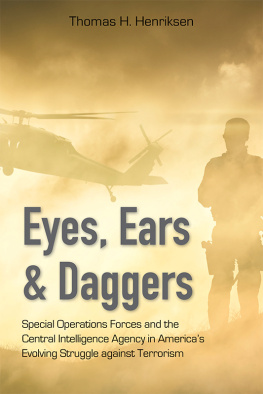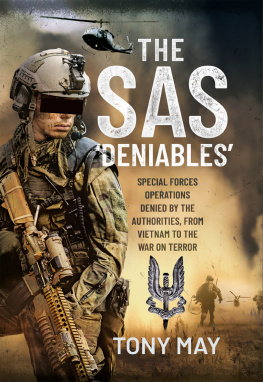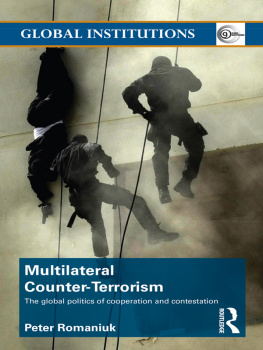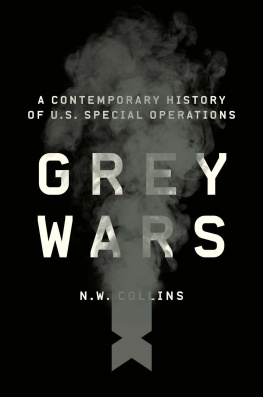ADVANCE PRAISE FOR
Eyes, Ears, and Daggers
Eyes, Ears, and Daggers is arguably the best book on the relationship of the modern Central Intelligence Agency (CIA) and the Special Operations Forces (SOF). From the American Revolution to the Office of Strategic Services and the subsequent birth of the CIA and the SOF, the relationship among intelligence, paramilitary, psychological operations, the SOF, and the broader Special Operations community can be summed up as yin and yang, constantly adjusting, rebalancing, and ebbing and flowing with the good and the bad. When it has counted, the CIAs resources, relationships, and authorities, combined with the SOF capabilities and capacity, have provided our nation with exquisite tactical actions that have achieved decisive and often strategic effects. Thomas Henriksens well-researched work, using analyses based on open-source and published works, will serve students, researchers, and the public, providing an understanding of the unique and incredible relationship between two of our nations most important organizations: the CIA and the SOF.
David S. Maxwell(colonel, ret., US Army Special Forces), associate director, Center for Security Studies, Georgetown University
This clearly written account of the evolution of the working relationship between irregular US military units and the paramilitary activities of the Central Intelligence Agency (CIA) is exciting and important. Henriksens compelling analysis is that cooperation between Special Operation Forces and the CIA is necessary in todays struggle against the large terrorist organizations, Al Qaeda and ISIS, that are operating in many countries of the Islamic world.
John Deutch, former director of the Central Intelligence Agency and deputy secretary of defense
Eyes, Ears, and Daggers is a primer on what makes our Special Operations Forces so special. Henriksen shows how the Central Intelligence Agencys (CIAs) inability to provide the intelligence essential to the military forces operation has caused the Pentagon to develop its own intelligence, how the CIA pushed back, and how battlefield necessity has been key to mastering bureaucratic rivalries. This book teaches the cautionary lesson that the skills and bravery of frontline operators are hostage to high officials proper focus on the mission to be accomplished. It should be read by all who count on our special forces in the fight against terrorism.
Angelo Codevilla, professor emeritus of international relations at Boston University

With its eminent scholars and world-renowned library and archives, the Hoover Institution seeks to improve the human condition by advancing ideas that promote economic opportunity and prosperity, while securing and safeguarding peace for America and all mankind. The views expressed in its publications are entirely those of the authors and do not necessarily reflect the views of the staff, officers, or Board of Overseers of the Hoover Institution.
www.hoover.org
Hoover Institution Press Publication No. 671
Hoover Institution at Leland Stanford Junior University, Stanford, California 94305-6003
Copyright 2016 by Thomas H. Henriksen
All rights reserved. No part of this publication may be reproduced, stored in a retrieval system, or transmitted in any form or by any means, electronic, mechanical, photocopying, recording, or otherwise, without written permission of the publisher and copyright holders.
Hoover Institution Press assumes no responsibility for the persistence or accuracy of URLs for external or third-party Internet websites referred to in this publication, and does not guarantee that any content on such websites is, or will remain, accurate or appropriate.
Library of Congress Cataloging-in-Publication Data
Names: Henriksen, Thomas H., author.
Title: Eyes, ears, and daggers : special operations forces and the Central
Intelligence Agency in Americas evolving struggle against terrorism /
Thomas H. Henriksen.
Other titles: Hoover Institution Press publication ; 671.
Description: Stanford, CA : Hoover Institution Press, 2016. | Series: Hoover
Institution Press publication ; no. 671
Identifiers: LCCN 2016023703 (print) | LCCN 2016024284 (ebook) |
ISBN 9780817919740 (clothbound : alk. paper) | ISBN 9780817919764 (EPUB) |
ISBN 9780817919771 (Mobipocket) | ISBN 9780817919788 (EPDF) |
Subjects: LCSH: TerrorismUnited StatesPreventionHistory. |
TerrorismGovernment policyUnited StatesHistory. | Special forces
(Military science)United StatesHistory. | United States. Central
Intelligence AgencyHistory. | Interagency coordinationUnited
StatesHistory.
Classification: LCC HV6432.H475 2016 (print) | LCC HV6432 (ebook) |
DDC 363.325/170973dc23
LC record available at https://lccn.loc.gov/2016023703
For Jim Harrison, onetime classmate and enduring friend, who lived part of the story of this book in the Vietnam War.
Contents
chapter one
Americas Early Unconventional Ventures
chapter two
World War II and After: The Catalysts for Cloak and Dagger
chapter three
Specialized Soldiering and Intelligence Operatives in the Vietnam War
chapter four
The Emergence of a New Security Architecture
chapter five
September 11th and the Integration of Special Operators and Intelligence Officers
chapter six
The SOF-CIA Fusion Concept in Two Theaters
chapter seven
SOF-CIA in Somalia, Yemen, and Beyond
I T IS OFTEN SAID that most institutions are unique in their own way. The Hoover Institution is more unique than most. Not only does it provide all manner of administrative and technical support to its fellows but its legendary standing also brings together an array of high-profile former government officials, eminent resident fellows, and renowned visiting scholars who intellectually stimulate and contribute to the research and writing conducted under its auspices. Its director, Thomas Gilligan, and his associates enable the institutions researchers to concentrate on scholarship, free of many of the time-consuming administrative constraints that can hinder and limit investigation and thought. Once more, I am indebted to my colleagues for their commentary and exchanges.
Over the course of researching and writing this volume, I have been blessed by many first-rate research assistants, who helped in all aspects of its creation. They are Nicholas Siekierski, Alexander Fulbright, Lisa Teruel, Gabriel Shapiro, and Jeanene Harlick. Each made distinct contributions to the book. The errors, of course, remain my own despite their assistance.














